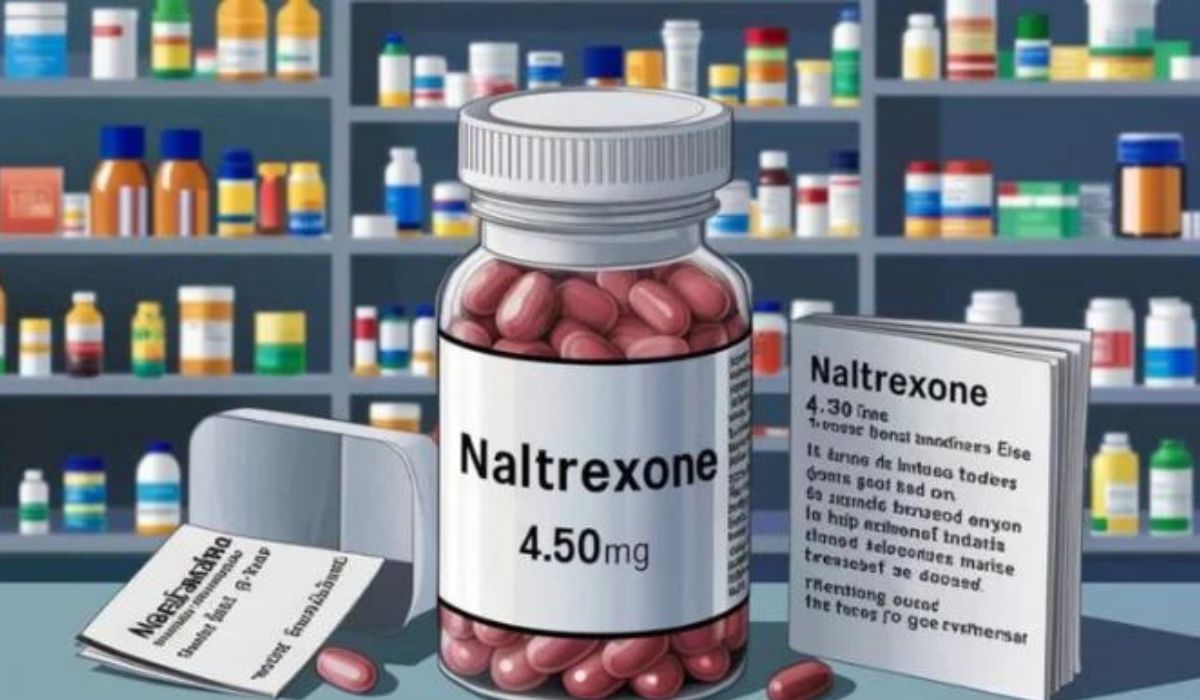Introduction
Naltrexone 4.50mg is a crucial medication in treating opioid dependence and alcohol use disorder. As an opioid antagonist, it effectively blocks the effects of opioids, which helps reduce cravings and prevent relapse. Recently, Naltrexone has gained attention for its effectiveness and safety profile. This article explores various aspects of Naltrexone 4.50mg, including its mechanism of action, benefits, dosage recommendations, and potential side effects. By understanding this medication better, individuals and healthcare providers can make informed decisions regarding its use.
What is Naltrexone?
Naltrexone is a synthetic opioid receptor antagonist that plays a vital role in treating opioid addiction and alcohol dependence. This drug works by binding to opioid receptors in the brain, which blocks the euphoric effects of opioids and reduces cravings. As a result, Naltrexone helps individuals avoid relapse after detoxification. Moreover, Naltrexone is being studied for its potential applications in treating obesity and other addictive behaviors. The medication comes in various forms, including tablets and extended-release injections, with 4.50mg being a common oral dosage for treatment.
Mechanism of Action
Naltrexone 4.50mg functions by antagonizing opioid receptors that play a crucial role in the brain’s reward system. When someone uses opioids, these receptors produce feelings of euphoria and pleasure. By blocking these receptors, Naltrexone prevents the reinforcing effects of opioids, making them less appealing. This mechanism helps individuals maintain sobriety and significantly reduces the risk of relapse. Furthermore, Naltrexone can also diminish the pleasurable effects of alcohol, thereby supporting individuals in their recovery from alcohol dependence. Understanding this mechanism provides insight into how Naltrexone aids in addiction treatment.
Benefits of Naltrexone 4.50mg

Using Naltrexone 4.50mg offers numerous benefits for individuals recovering from opioid or alcohol dependence. One significant advantage is its ability to effectively reduce cravings and withdrawal symptoms, making it easier for individuals to stay sober. Additionally, Naltrexone is generally well-tolerated and has a favorable safety profile, with fewer side effects than many other medications used in addiction treatment. Patients can take it as a daily oral tablet or receive monthly injections, providing flexibility in treatment. Importantly, Naltrexone’s role in promoting long-term recovery is crucial, as it helps individuals regain control over their lives and significantly reduces the risk of relapse.
Dosage Recommendations
The standard starting dosage of Naltrexone 4.50mg is typically one tablet taken daily. However, healthcare providers may adjust this dosage based on individual needs and responses to the medication. Therefore, patients must closely follow their doctor’s recommendations and should not exceed the prescribed dosage. For some individuals, the dosage may increase to 50mg daily if needed. Additionally, patients should discuss their medical history and any other medications they are taking with their healthcare provider to ensure safe and effective use. Regular follow-up appointments are essential for monitoring progress and making necessary adjustments.
Potential Side Effects
While Naltrexone 4.50mg is generally well-tolerated, some side effects may occur. Common side effects include nausea, headache, dizziness, and fatigue. In rare cases, individuals may experience more severe reactions, such as liver problems or allergic reactions. It is crucial for patients to report any unusual symptoms to their healthcare provider promptly. Monitoring liver function through blood tests is often recommended, especially for those with pre-existing liver conditions. By understanding potential side effects, individuals can make informed choices about their treatment and remain vigilant.
Precautions and Contraindications
Before starting Naltrexone 4.50mg, patients should discuss their medical history with their healthcare provider. Individuals with a history of opioid use must wait until they are completely detoxified before taking Naltrexone. Using Naltrexone while opioids are still in the system can lead to withdrawal symptoms. Additionally, patients with liver disease or other significant health issues should use this medication cautiously. Pregnant or breastfeeding individuals should also consult their healthcare provider to weigh the risks and benefits. Taking these precautions ensures safe and effective treatment.
Naltrexone in Combination Therapy
Naltrexone 4.50mg can be an integral part of a comprehensive treatment plan that includes counseling and support groups. Combining medication with behavioral therapies enhances the chances of successful recovery. This holistic approach addresses the psychological aspects of addiction while helping manage cravings and withdrawal symptoms. Research indicates that individuals who participate in counseling while taking Naltrexone tend to achieve better outcomes. Therefore, healthcare providers often recommend integrating these therapies to create a more effective treatment experience.
Conclusion
Naltrexone 4.50mg plays a vital role in treating opioid dependence and alcohol use disorder. Its mechanism of action, combined with the benefits it offers, makes it an essential tool for individuals seeking recovery. By understanding its uses, dosage recommendations, and potential side effects, patients can make informed decisions about their treatment. Collaboration with healthcare providers ensures that individuals receive the support they need throughout their recovery journey. As more people turn to Naltrexone for help, its positive impact on addiction treatment continues to grow.
FAQ
1. What is Naltrexone 4.50mg used for?
Naltrexone 4.50mg primarily treats opioid dependence and alcohol use disorder.
2. How does Naltrexone work?
Naltrexone blocks opioid receptors in the brain, which reduces cravings and prevents relapse.
3. What are the common side effects?
Common side effects include nausea, headache, dizziness, and fatigue.
4. How should Naltrexone be taken?
Typically, Naltrexone is taken as one tablet daily, but the dosage may vary based on individual needs.
5. Can Naltrexone be combined with other treatments?
Yes, Naltrexone is often used alongside counseling and support groups for comprehensive treatment.









































